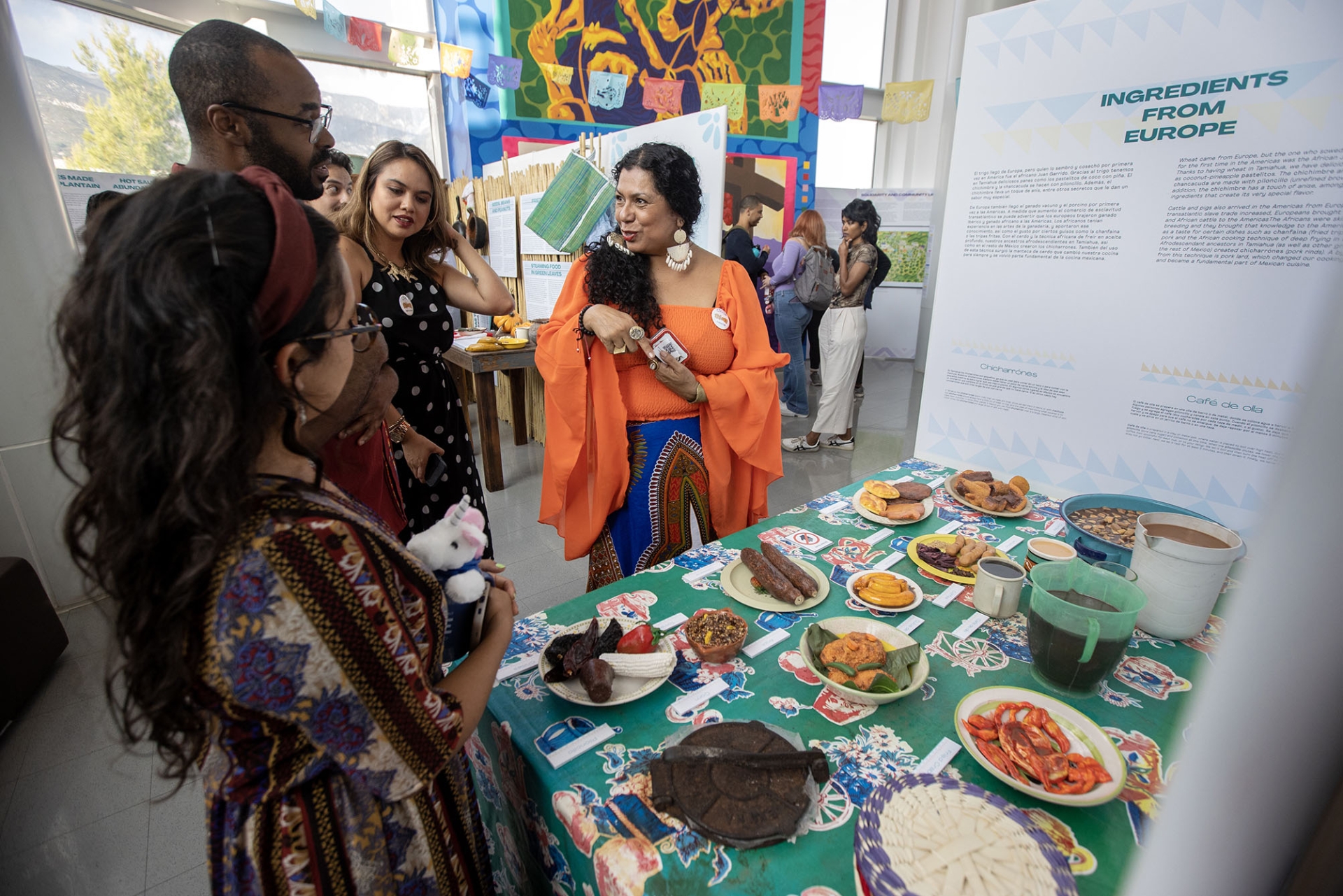Alan Llavore | Office of Strategic Communication | (909) 537-5007 | allavore@csusb.edu
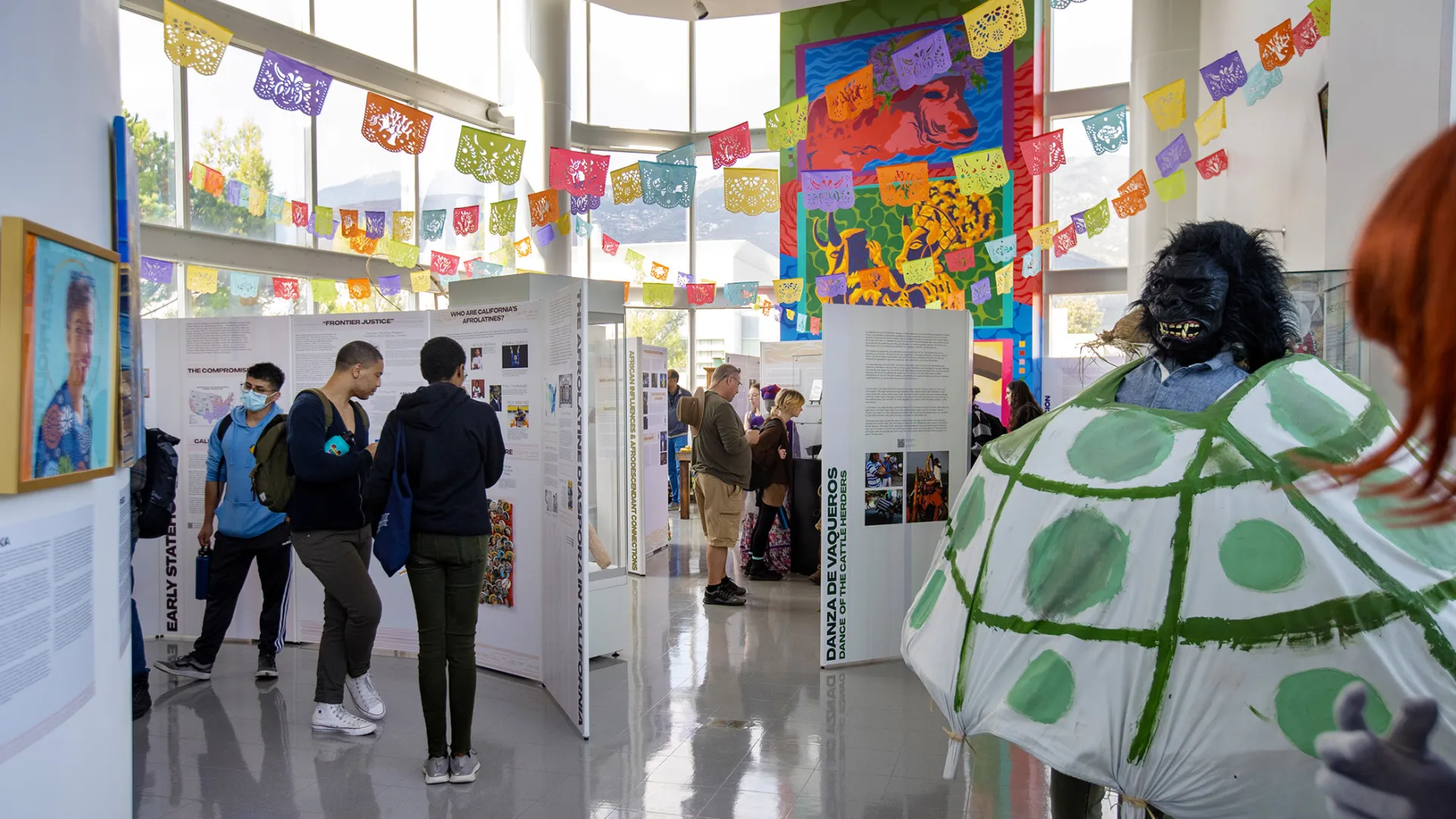

Visitors packed the Anthropology Museum on Sept. 21 at Cal State San Bernardino to mark the formal opening of the new exhibition, “Afróntalo,” which directs the focus on the often-underrepresented and overlooked history and culture of Mexico’s Afro-descendent communities.
“‘Afróntalo’ represents a unique and invaluable effort to shed light on the often-underrepresented narratives of the Costa Chica region in Oaxaca and Guerrero, Tamiahua in Veracruz, Coyolillo in Veracruz and Mascogos in Coahuila,” said Hazel Blackmore, the executive director of Mexico-United States Commission for Educational and Cultural Exchange (COMEXUS). “These communities have long held vibrant cultures and histories that deserve to be showcased and celebrated on the world stage.”
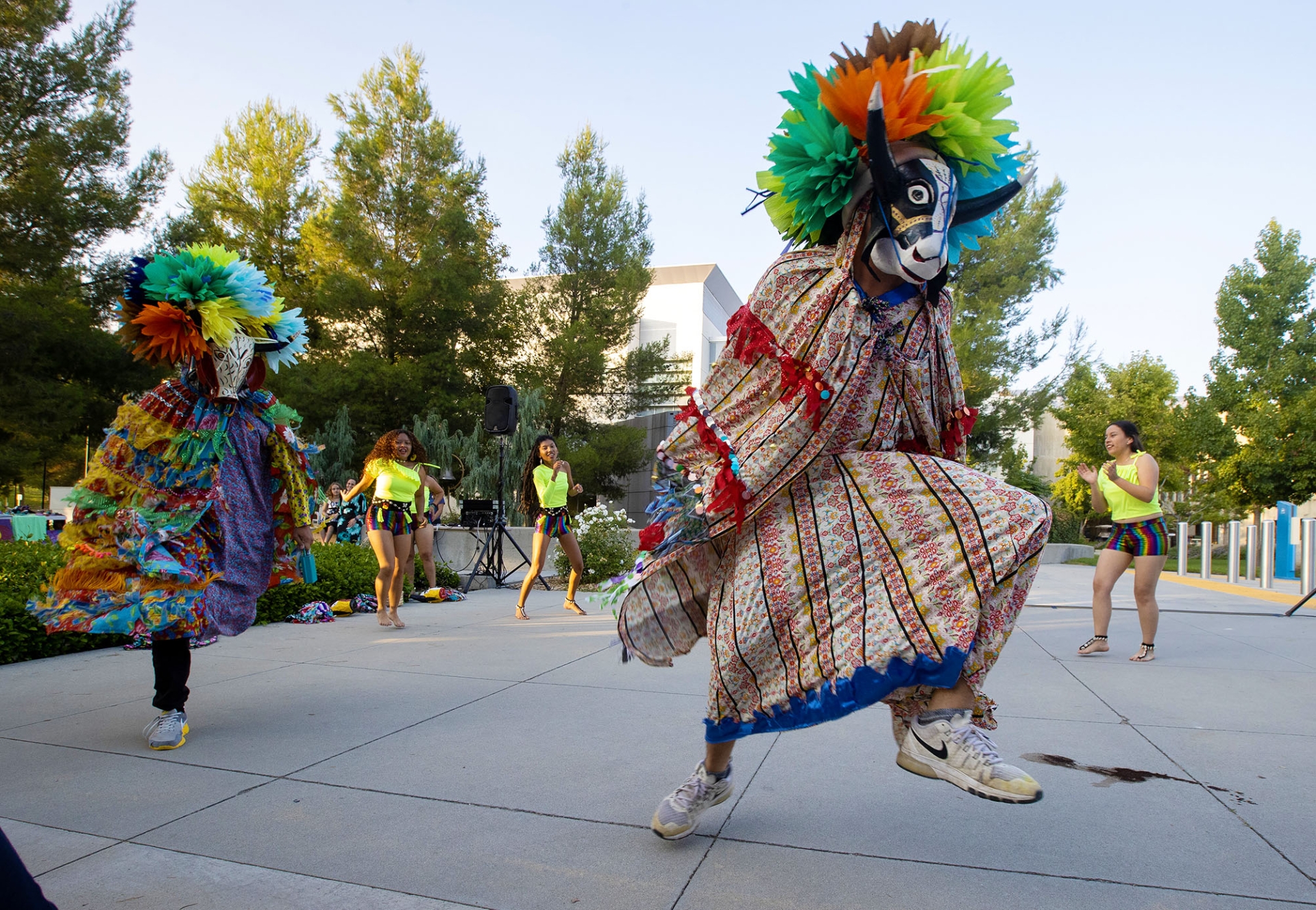
Those vibrant cultures are on display at the Anthropology Museum, located on the third floor of CSUSB’s College of Social and Behavioral Sciences, through June 19. Visitors to the exhibition are greeted with art and objects and descriptive displays divided into two sections: one curated by representatives of four Afro-descendant communities in Mexico, and another presenting biographies and original portraits of 21 Afrolatine Californians.
And over both is a colorful mural, stretching about two stories high from floor to ceiling, painted by artist Julio “Honter” Antuna Lopez, depicting scenes related to the Afro-descendant communities.
“One in four Latin Americans has African ancestry,” the exhibition’s introductory panel states on a 10-foot tapestry crafted by CSUSB student Alessandro Corsaro that hangs at the museum entrance. “And yet, there is a general deficit of knowledge regarding the presence and prevalence of blackness throughout the Americas. This is more than a simple matter of obscurity. It is a problem of erasure, invisibility and dislocation. Afróntalo introduces you to four communities in Mexico and twenty-one Californians, all in their own words, to explore the depth and breadth of Afrolatine histories, cultures and identities.”
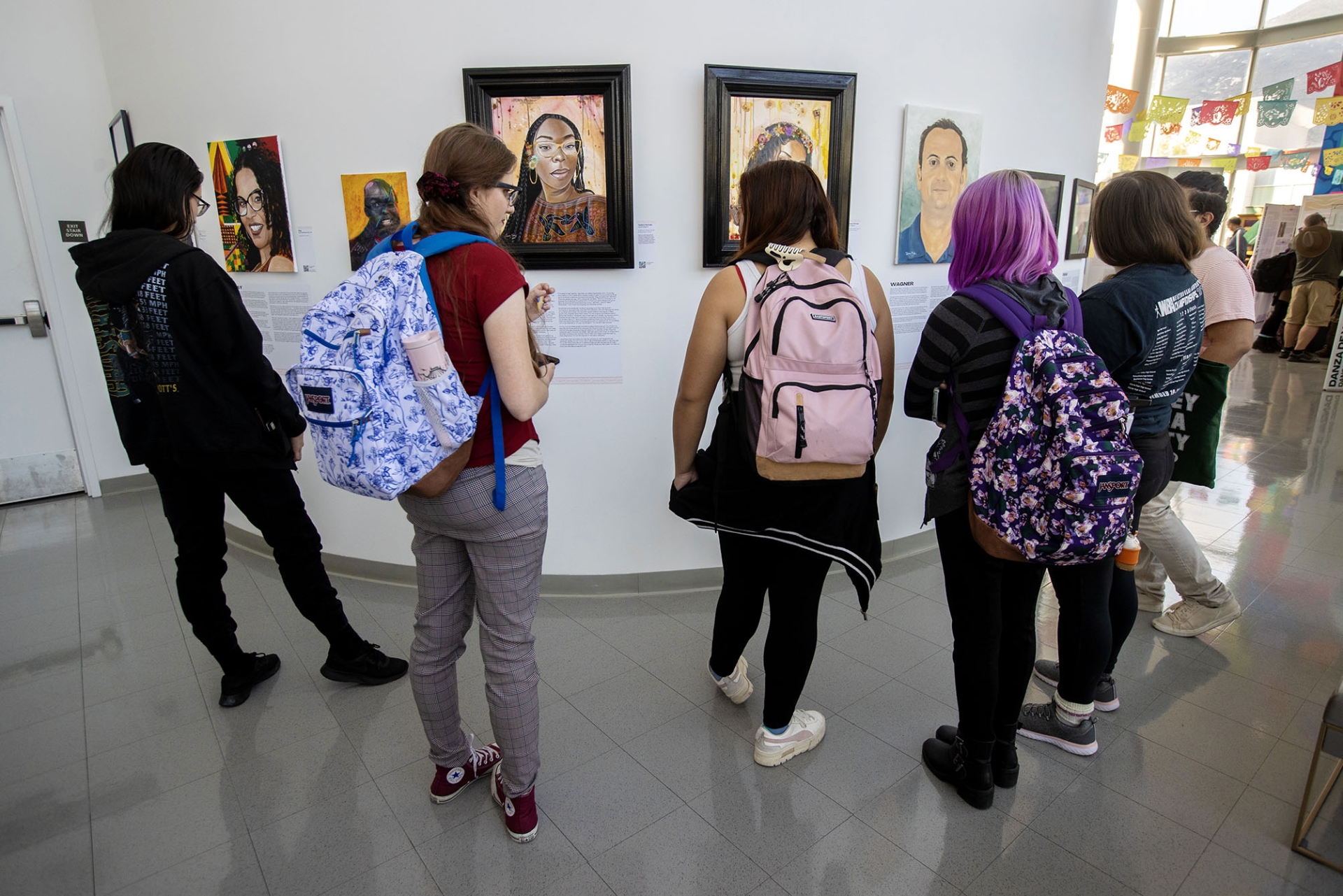
The four communities that partnered with the Anthropology Museum to bring this exhibition to life are: Tamiahua (Veracruz state, lead curator Doris Careaga-Coleman), Coyolillo (Veracruz state, lead curator Daniela Carreto López), the Negros Mascogos (Coahuila state, lead curator Karla Rivera Tellez), and the Costa Chica region (Oaxaca and Guerrero states, lead curator Sergio Navarrete Pellicer).
All four curators attended the opening reception, which was highlighted by performances by Danza Afrobalele, led by López, and rappers La Cruda Mora. Both are affiliated with Centro Cultural Comunitario Casa Coyolillo (the Community Cultural Center of Coyolillo), better known as Casa Coyolillo.
Lead curators and their teams were trained in curation and exhibition development by María Fernanda Yáñez Uribe from Museo de Arte Popular in Mexico City.
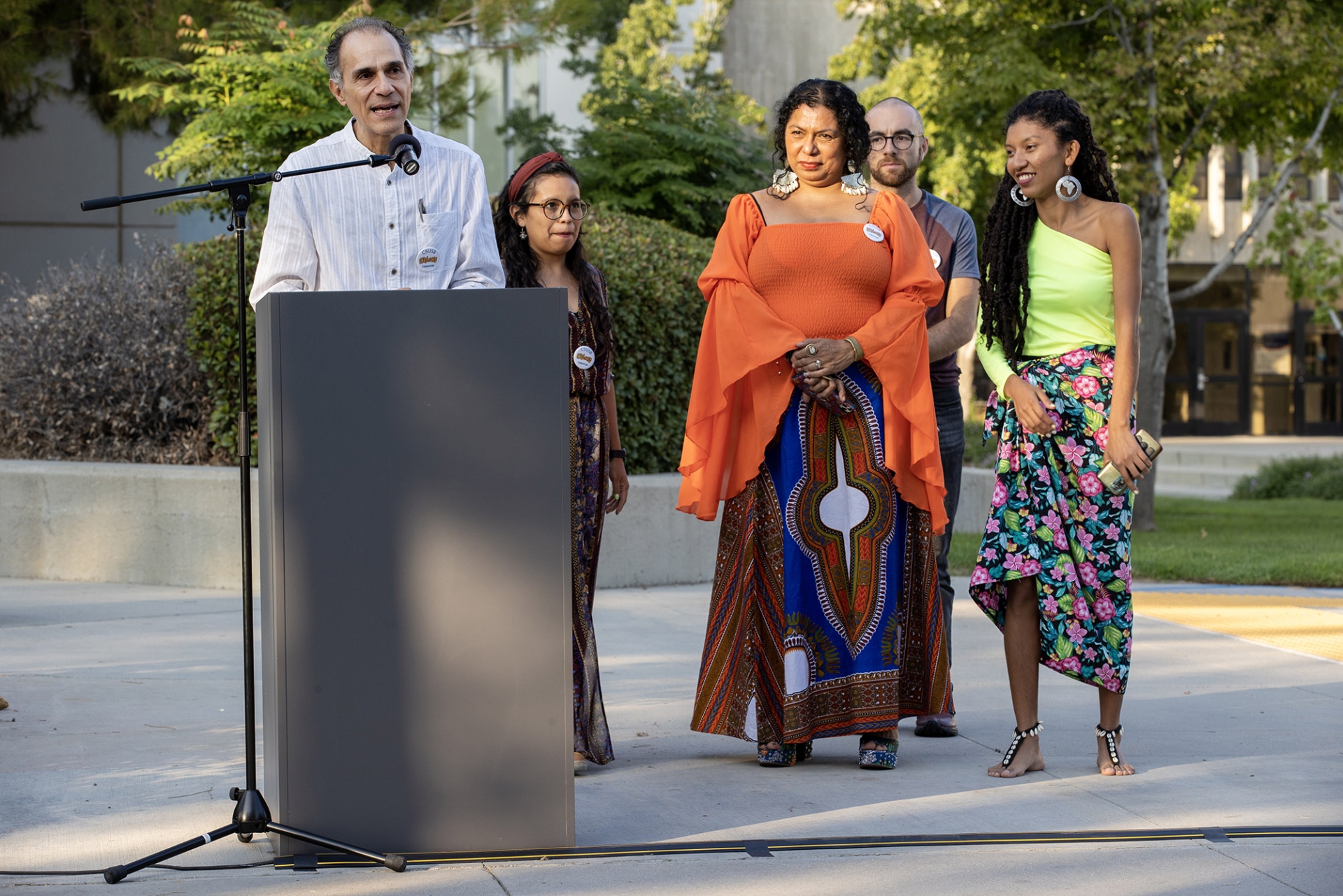
Each curatorial team chose their own focus for the exhibition:
- For Tamiahua, the focus is cuisine, cooking, fishing and connecting community traditions to Africa and other Afro-descendant communities in the Americas.
- The Coyolillo portion focuses on the joys of the community and Blackness, highlighting life in the town, located in Veracruz, that has a rich Afro-descendant heritage.
- For the Costa Chica community, the focal point is three Afro-descendant dances from the region, with props used in the Danza de la Tortuga (Dance of the Turtle), Danza de Vaqueros (Dance of the Cattle Herders) and Danza de los Diablos (Dance of the Devils), lining one wall.
- As for the Negros Mascogos, the exhibit follows the history of enslaved Afro-descendants who made their way to Mexico.
“As a Hispanic-Serving Institution, we are always eager to take advantage of opportunities to celebrate the histories, the cultures, present on our campus and in the larger world around us. Hispanic Heritage Month is definitely one such occasion,” said CSUSB President Tomás D. Morales in his welcoming remarks.
The Afrolatine culture is a vibrant part of the Hispanic world, Morales said, pointing to his own Afro-descendant roots from Puerto Rico. “This exhibit brings awareness, and provides access to those who view the exhibit, either in person or virtually,” he said, announcing that by the end of the academic year, “Afróntalo” will have a permanent space online with a virtual exhibit developed by CSUSB’s office of Academic Technologies & Innovation.
And, to take advantage of the exhibition’s fall and spring run, Morales said, “I am committed to having as many school children come from San Bernardino, Riverside County, to learn about their roots, particularly those from Mexico and Latin America.”
The curators, Blackmore and Matthew Robinson, a program director for the U.S. Department of Education, credited Anthropology Museum director Arianna Huhn for bringing together the people and resources that became “Afróntalo.” While Sept. 22 marked the opening of the exhibition, it also was a celebration of the more than two-year effort to develop it.
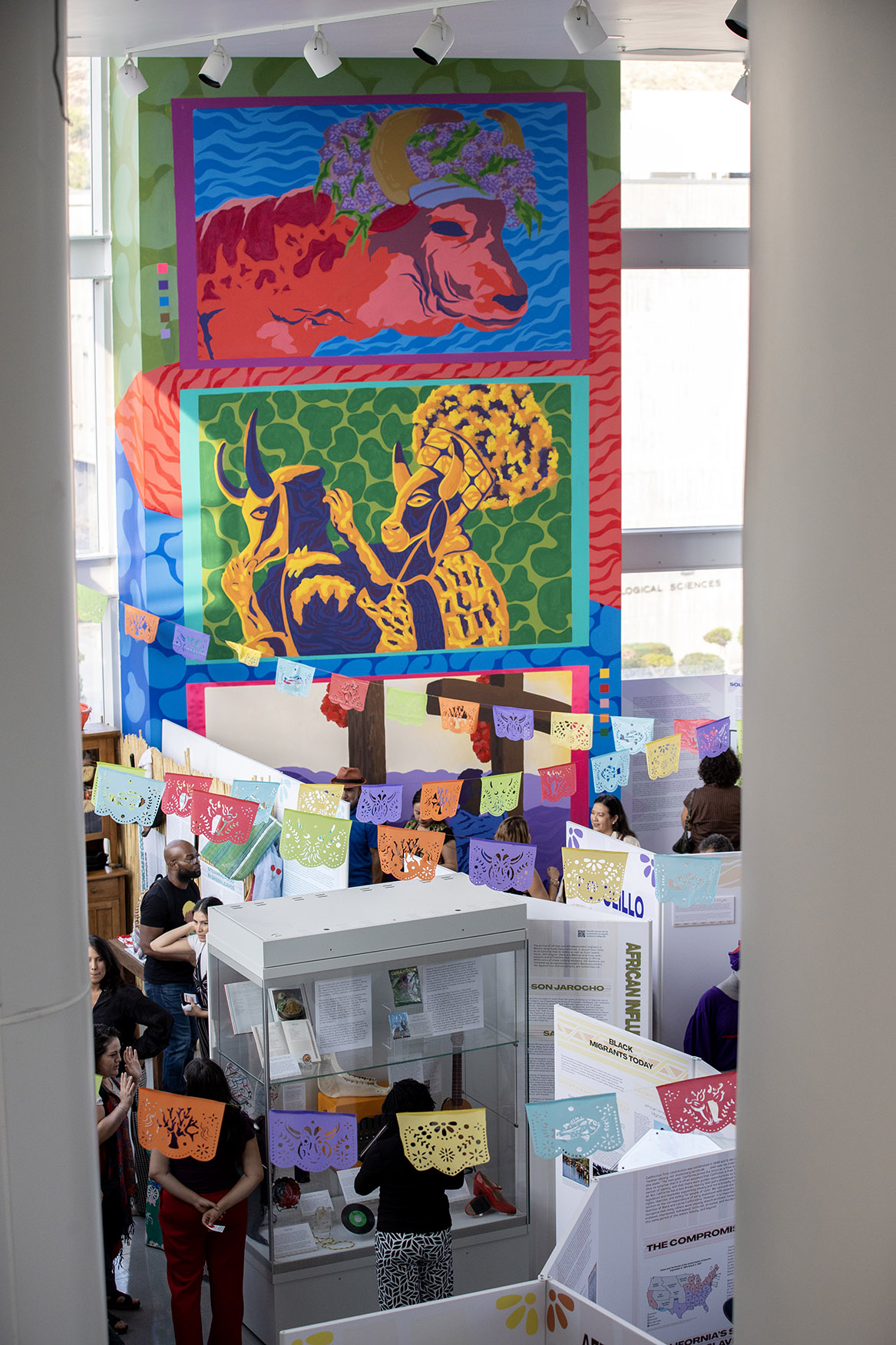
Robinson, who manages the Fulbright-Hays Seminars Abroad Program, said the genesis of “Afróntalo,” can be traced to a four-week 2021 seminar, “Exploring African Heritage in Mexico,” organized by COMEXUS. He called the work and the resulting exhibition “exemplary … because although Dr. Huhn’s time abroad in Mexico for the seminar was just four weeks, the activities that stemmed from that experience continue two years later, with meaningful impacts that will continue to inspire and inform this and many other communities.”
While the main focus is the museum exhibit, the Anthropology Museum organized a slate of programs in the days leading to the opening of “Afróntalo,” with presentations for the campus community by representatives of the exhibition’s four partner communities.
And more are planned both on and off campus. Visit the Anthropology Museum website for updates.
The exhibition has been made possible in part with grants from California Humanities, the Institute of Museum and Library Services and the U.S. Embassy in Mexico’s Understanding African Heritage in Mexico through Exchanges Fund, which funded the participation of the exhibition’s curatorial team from Mexico in the opening programs of Afróntalo.
Additional sponsors of opening week celebration programming include: The College of Social and Behavioral Sciences Office of the Dean, the Division of Student Affairs, the College of Extended and Global Education, the Office of the Provost, the Office of Student Research, the Office of Community Engagement, the Department of Art and Design, the College of Arts and Letters Office of the Dean, the Intellectual Life Fund, the Department of Theatre Arts, Los Amigos Spanish Club and University Advancement.
The Anthropology Museum’s hours are 8 a.m.-4:30 p.m. Monday through Friday. During the run of “Afróntalo,” the museum will also be open the second Saturday of each month.
